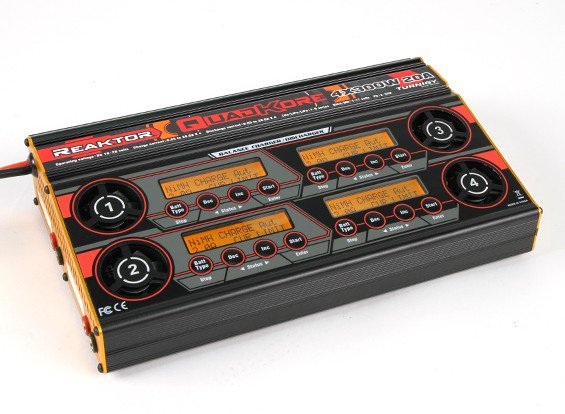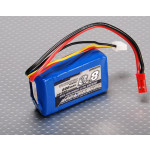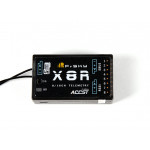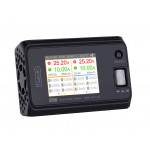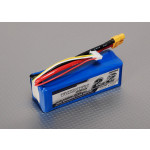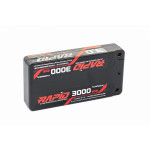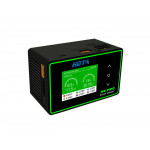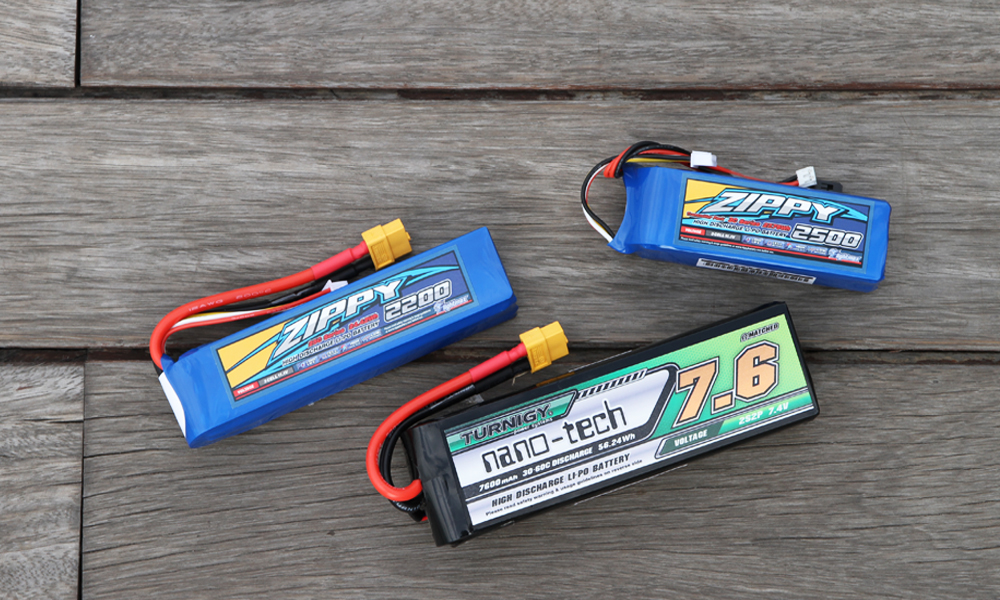
Lithium polymer batteries or LIPO batteries as we describe them, are a member of the lithium-ion battery chemistry family.
There are many members of the family and each has pros and cons. Different cell formats, voltages, discharge curves, charge and discharge rates. The most common RC battery is the soft pouch format. The cylindrical cells tend to be found in consumer-grade electronics whereas our humble LiPo is generally offered in a soft pouch, which makes them lighter but also less rigid. Although not unheard, you would not commonly find the round metal cased LiPos in RC. The soft packs are lighter and much more powerful which is why they are used in all disciplines of the hobby. All modern devices have migrated over to LiPo batteries because the energy density is far greater, the charge time is minutes not hours and the price has dropped to the point where there is no real alternative. LiPo batteries are found in everything from phones to laptops and even your fitness tracker. LiPo batteries come in almost every shape and size, and although they come with additional risks the benefits far outweigh the negatives. There are many reasons why our electronic gadgets have gravitated to this amazing technology and I think it’s fair to say they are here to stay until the next great leap forward. The term, LiPo, is really only used by the RC community. Every other industry calls them as Li-ion batteries. So, if you’re travelling by air soon and you see a sign about Li-on batteries, they are indeed one and the same. The rule of thumb is each battery must not be over 100w/h (watt-hours) and they must be carry-on luggage. This is because it is easier to deal with a cabin fire as opposed to a cargo hold fire. Be sure to check your local laws and regulations because although most countries follow the IATA rules some may vary.
LIPO Battery Safety
LiPo batteries can be volatile if treated incorrectly. There are many urban legends around LIPO batteries, from salt baths to explosions and everything in-between. Some unscrupulous vendors will attempt to cash in on the fear of others, peddling explosion-proof bags, for instance, LiPo batteries don’t explode but they will catch fire. When they do they vent our a flammable gas that can set fire to surrounding items. On a serious note, safety is important and you should take the time to fully read and understand the safety instruction provided with your LiPo battery at the time of purchase. Be sure to follow the manufacturer's guidelines and take note of the below.
Never
- Never alter, puncture or impact batteries or related components.
- Never allow the terminals of the battery to make contact with conductive objects, such as metal.
- Never store loose batteries together, the battery terminals may contact one another causing a short circuit.
- Never expose batteries to extreme temperatures or direct sunlight. The temperature range must be between 40-120° F (4-49° C).
- Never charge batteries that are hot to the touch (above 100°F)
- Never charge Batteries inside of the model.
Always
- Always charge/store batteries in a non-conductive, fireproof container or bag, outside and away from combustible material.
- Always use a compatible balanced mode charger, specifically designed for the chemistry of battery you are using.
- Always charge batteries in an open area away from flammable or combustible materials, on a concrete surface outdoors.
- Always set the charger for proper cell count and/or voltage listed on batteries’ labels.
- Always set the charger to the amp charge rate as listed on battery labels.
Safety
If at any time batteries become damaged, hot, or begin to swell, discontinue charging (or discharging) immediately. Quickly and safely disconnect the charger. Then place the batteries in a safe, open area away from flammable materials in an approved LiPo bag to observe. After one hour, remove the batteries from service. DO NOT continue to handle, attempt to use, or ship the batteries. failure to follow these procedures can cause damage to batteries, personal property or cause serious injury. Damaged or swollen Batteries can be unstable and very hot. DO NOT touch batteries until they have cooled. Dispose of Batteries in the manner required by your city, county, state or country. In the event of a fire, a Class D, dry chemical fire extinguisher must be used. Do not fight the LIPO fire as they can burn underwater, so fight the surrounding area.
Discharging
- Never discharge Batteries at amperage rates higher than specified on battery labels.
- Never allow the temperature of batteries to exceed temperatures advised by the manufacturer.
- Never discharge batteries to a voltage below which they are rated by the manufacturer when measured under load (connected to the vehicle or a charger capable of discharge). Batteries discharged to a voltage lower than the lowest approved voltage may be damaged, resulting in loss of performance and potential fire when Batteries are charged.
- In the event of a crash, always quickly and safely disconnect and remove batteries from the model. Then follow the previously listed safety procedures.
- If the internal contents of Batteries come into contact with your skin, wash the affected area(s) with soap and water immediately. If it comes into contact with your eye(s), flush them with generous amounts of water for 15 minutes and seek urgent immediate medical attention.
Charging
Accuracy is a must because each cell in the battery is charged to .01of a volt. A good charger should be seen as an investment in your safety and the longevity of your batteries. A good charger must be accurate, reliable and cost-effective. The Accucel-6 has been around a very long time and is well known to modellers. In fact, I owned the earlier generation Accucel-6 and only upgraded to a more powerful unit as my batteries grew in cell count and capacity.
Charging is a fairly simple process to get right. You must ensure you have selected the right cell count, battery type, and connected the wires correctly. Get into the habit of connecting the balance lead to the charger every time, even if you are not balance charging, the charger still monitors the individual cell voltages and if the voltage goes out of specification the charger will stop the charge.
Disposal
Saltwater Bath There is a great myth that shares more in common with Terminator than the RC industry because this myth just won't die. Do not attempt to dispose of you LIPO battery by placing it in a saltwater bath. This dissolves the aluminium tabs within the battery but does nothing else. It appears to be flat because when you run a multimeter over the main discharge leads there is no reading. This is because the internals of the battery has been corroded leaving each cell with a charge. Responsible Battery Disposal 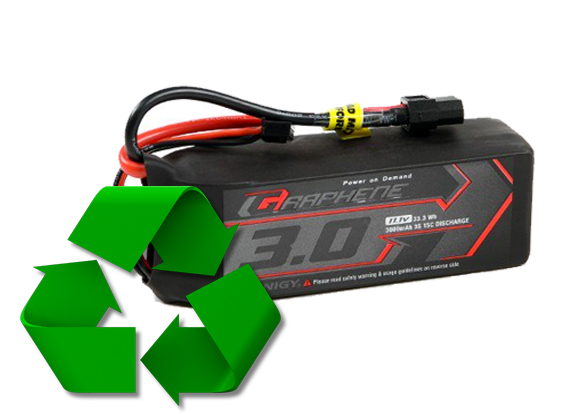 We all have a responsibility to make sure that batteries are disposed of in a responsible manner. Many local governments have hazardous waste drop-off centres that accept batteries, some at no cost to you. Batteries are hazardous to you and the environment so do the right thing drop your old batteries off for recycling. Also, be sure that your batteries are completely flat prior to disposal as a charged battery can be quite volatile. If your battery starts a fire as a result of its charge state you may be held liable so be sure you discharge the battery before disposal. Most LiPo chargers have a special discharge function that can be used discharge your LiPo battery. Generally, the charger will discharge the pack into an internal resistor producing heat so 50w or less is the usual max setting. Whilst discharging smaller currents is fine you need to remember that it may take many hours. If you are trying to completely discharge packs for disposal a light bulb may be more effective as it’s a set and forget method. Some dischargers have a cut-off voltage and will not discharge beyond a safe voltage of 3V. If this is the case, you will need to finish the job with a bulb anyhow. Light Bulb Method The Lightbulb method is a tried and tested and quite a popular tool for discharging LiPo batteries. The method is cheap, fast, reliable, easy to make, and can be cobbled together from parts you have in your workshop. A 3S LiPo can be connected directly to a 12V light bulb and a 6s can be connected to two 12v globes in series. You can also use a resistive load like those found in hair dryers. Story Images by Mike
We all have a responsibility to make sure that batteries are disposed of in a responsible manner. Many local governments have hazardous waste drop-off centres that accept batteries, some at no cost to you. Batteries are hazardous to you and the environment so do the right thing drop your old batteries off for recycling. Also, be sure that your batteries are completely flat prior to disposal as a charged battery can be quite volatile. If your battery starts a fire as a result of its charge state you may be held liable so be sure you discharge the battery before disposal. Most LiPo chargers have a special discharge function that can be used discharge your LiPo battery. Generally, the charger will discharge the pack into an internal resistor producing heat so 50w or less is the usual max setting. Whilst discharging smaller currents is fine you need to remember that it may take many hours. If you are trying to completely discharge packs for disposal a light bulb may be more effective as it’s a set and forget method. Some dischargers have a cut-off voltage and will not discharge beyond a safe voltage of 3V. If this is the case, you will need to finish the job with a bulb anyhow. Light Bulb Method The Lightbulb method is a tried and tested and quite a popular tool for discharging LiPo batteries. The method is cheap, fast, reliable, easy to make, and can be cobbled together from parts you have in your workshop. A 3S LiPo can be connected directly to a 12V light bulb and a 6s can be connected to two 12v globes in series. You can also use a resistive load like those found in hair dryers. Story Images by Mike

